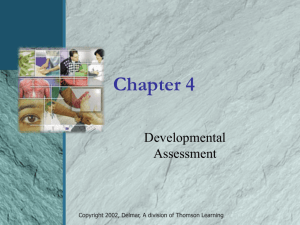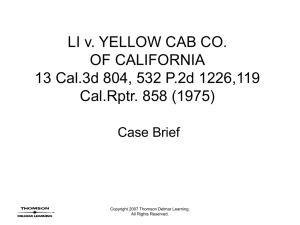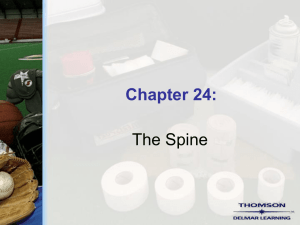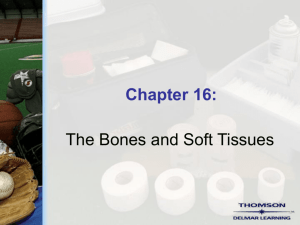File - Red Mountain
advertisement
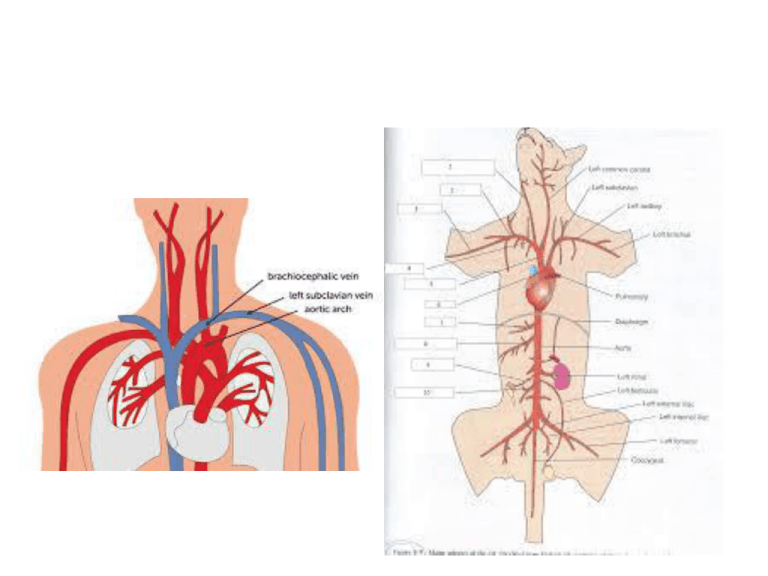
Finals • Animals – Parts – Naming terms • • • • Behavior / Restraint Medical Terminology Veterinarian and Vet Tech Basic Anatomy – – – – – Skeletal Digestive Muscular Respiratory Nervous PATHOLOGICAL CONDITIONS SKELETAL, MUSCULAR, DIGESTIVE, RESPIRATORY AND NERVOUS SKELETAL SYSTEM BONE PROBLEMS – PATHOLOGICAL CONDITIONS • Hip dysplasia • Invertebral disc disease • Herniated disc • Ruptured disc • IVDD • Osteochondrosis dissecans • OCD • Osteoarthritis Degenerative Joint Disease / DJD • Spondylosis • Luxation and Subluxation (complete vs partial) IVD – INVERTEBRAL DISC DISEASE • Can happen suddenly or slowly • Can cause paralysis • CT junction • TL junction • Breed propensity • Treatment SPONDYLOSIS OSTEOCHONDRITIS DISSECANS - OCD LUXATING PATELLA HIP DYSPLASIA Normal hip joint Hip Joint = Coxofemoral joint Subluxation = femoral head slips in and out of acetabulum FHO –FEMORAL HEAD OSTECTOMY MUSCULAR SYSTEM PATHOLOGICAL CONDITIONS FOR THE MUSCULOSKELETAL SYSTEM • Ataxia-lack of voluntary control of muscle movement • Atonic-lacking muscle control • Dystrophy-defective growth • Fibroma-tumor composed of fibrous connective tissue • Hernia- protrusion of an organ or fascia through the wall of the cavity that normally contains it • Laxity-looseness • Myopathy-abnormal condition of disease of muscle • Tetany – muscle spasms or twitching Ataxia-lack of voluntary control of muscle movement “wobbliness” Tetanymuscle spasms or twitiching DIGESTIVE SYSTEM • • • • • • • Borborgymus Trichobezoar Cribbing Colic Gastric Dilation Volvulus (GDV) Cleft palate LDA Copyright © 2006 Thomson Delmar Learning BORBORGYMUS • Bowel sounds, “stomach” rumble, peristalic • Rumble, gurgle, growl • produced by movement of the contents of the gastrointestinal tract as they are propelled through the small intestine muscle contractions (peristalisis) • can be loud enough to be heard with bare ears or may need a stethoscope to hear • fluid and gas moves forward in the intestines (in the vicinity of but not actually within the stomach). • The lack of bowel sounds is indicative of ileus, intestinal obstruction, or some other serious pathology. • Also associated with hunger Copyright © 2006 Thomson Delmar Learning TRICHOBEZOAR • Mass of hair • Formed in the gastrointestinal system • “hairball” • Can cause obstruction and have to be surgically removed MEGAESOPHAGUS • • • • • • Food stays in the esophagus Esophagus stays enlarged Lack of peristalis Food never enters stomach Food is regurgitated Food may be aspirated Copyright © 2006 Thomson Delmar Learning CLEFT PALATE • Abnormal opening between nasal passages and mouth • Interferes with eating • Respiratory difficulty (aspiration pneumonia) CRIBBING • “windsucking” • Also affects neck and back muscles due to the posture that is assumed when crbbing • Boredom, endorphine release, possible ulcers Copyright © 2006 Thomson Delmar Learning COLIC • Abdominal pain • Different causes • Obstruction • Impaction • Inflammation • Colitis, enteritis, peritonitis • Twisted / ”strangulation” • Volvulus, torsion, intussusception • Parasites Copyright © 2006 Thomson Delmar Learning GDV • Gastric Dilatation Volvulus • Stomach fills with air, twists on it’s axis • https://www.youtube.com/watch?v=VG4fYmcNCd M • https://www.youtube.com/watch?v=0JJnShl638I (good real life video!) Copyright © 2006 Thomson Delmar Learning DISPLACED ABOMASUM • Left Displaced Abomasum • Right Displaced Abomasum • More room for complications (torsion) LDA • LDA • https://www.youtube.com/watch?v=zLAj_rcqpPM Copyright © 2006 Thomson Delmar Learning RESPIRATORY SYSTEM PATHOLOGICAL CONDITIONS Epistaxis • Nosebleed • Icepack on nose to constrict blood vessels • Causes While there are many causes of epistaxis in dogs, the most common causes are trauma and infection. •Rodenticide or rat poisoning •Von Willebrand's disease (vWD) •Disseminated intravascular coagulation (DIC) •Immune-mediated thrombocytopenia •Ehrlichiosis - tick-borne disease •Rocky Mountain spotted fever - tick-borne disease •Hemangiosarcoma •Other cancers, especially of the nasal passages and skull •Fungal diseases (Aspergillis) •Horses: Exercise Induced Pulmonary Hemorrhage TRACHEAL FOREIGN BODY COLLAPSED TRACHEA THORACENTESIS • Hemothorax – blood • Pyothorax – pus • Pneumothorax - air • https://www.youtube.com/watch?v=O3Rxult05Cg • https://www.youtube.com/watch?v=ZK5dC6KxLKc INFLAMMATION OF • • • • • • Rhinitis Laryngitis Pharyngitis Bronchitis Tracheitis Tracheobronchitis • Kennel Cough FLUID OR INFLAMMATION • Pulmonary edema • fluid accumulation in the air spaces and parenchyma of the lungs. It leads to impaired gas exchange and may cause respiratory failure. • Pneumonia • an inflammatory condition of the lung affecting primarily the alveoli. • Snuffles • Pasteurella DIAPHRAGMATIC HERNIA NERVOUS SYSTEM PATHOLOGY • Ataxia: • Damage, degeneration or loss of nerve cells in the part of your brain that controls muscle coordination (cerebellum), results in ataxia • Without coordination • Stumbling • CP Deficit • Conscious Proprioceptive Deficit • Neurological defect in which the animal appears not to know where its limbs are “knuckling” https://www.youtub e.com/watch?v=JM -Wds_L7vI https://www.youtub e.com/watch?v=06 KO0q2ZZ5A HORNER’S SYNDROME Horner's Syndrome is a common Drooping eyelid • • Affected eye constricts • Affected eye appears sunken • The third eyelidmay appear red • With cats • Blunt force trauma • Tumor neurological disorder of the eye and facial muscles, caused by dysfunction of the sympathetic nervous system. VESTIBULAR DISEASE The vestibular system is responsible for maintaining normal balance. The vestibular system has central components located in the brain, and peripheral components located in the inner and middle ear. • https://www.youtube.com/watch?v =zcX0-UWig1s PARAPLEGIA • Paralysis of the hindlimbs • Para (nervous system) means hind or lower portion POLIOENCEPHALOMALACIA • PEM • Abnormal softening of the gray matter of the brain EQUINE LARYNGEAL HEMIPLEGIA • Called roaring • Noisy respiration/ narrowed larynx Nerve fiber degeneration of a laryngeal nerve PTOSIS OR -PTOSIS • Prolapse or drooping • Falling downward • Upper eyelid


